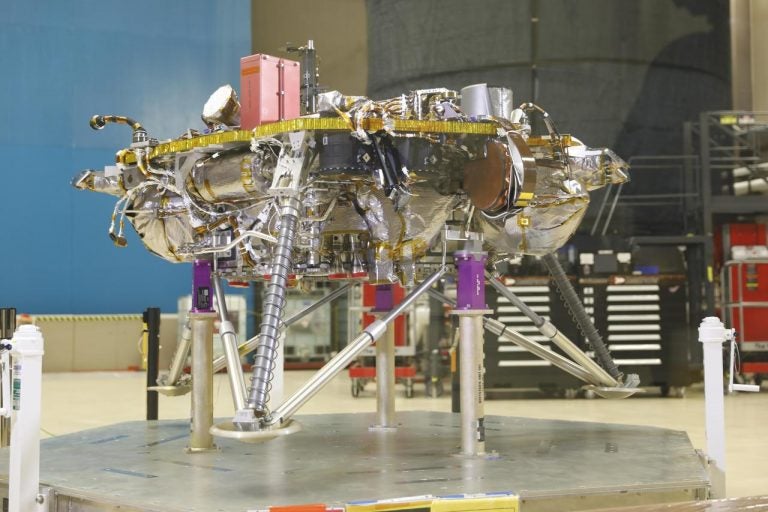NASA Touchdown On Mars
Listen 09:07
Once NASA's InSight Mars lander enters the Martian atmosphere and approaches the planet's surface, propulsive landing gear will slow the spacecraft down to about 5.5 mph (8.8 km/h) and safely set it down on the surface of the Red Planet. This image, taken at Lockheed Martin Space in Littleton, Colorado, shows several of the critical landing systems including the thrusters, lander legs and science deck. (NASA)
NASA’s InSight Lander is scheduled to set down on the surface of Mars on Monday, November 26th. As a fixed station, InSight will drill a probe 5 meters down into the rock to both temperature profile that part of the rock column and to listen very carefully for seismic activity the lander can use to characterize the interior of the planet. The goal of this project is to learn more about the formation and evolution of terrestrial planets, including Mars, by learning about the physical composition and tectonic activity of the planet.
NASA celebrated the 20th anniversary of the International Space Station this week. It was Nov 20th 1998, when the first component was launched.
The ISS has been continuously occupied since Nov. 2, 2000. Current plans call for its continued operation through 2024.
For the first time, astronomers have detected that a possible gamma ray bath could come from a supernova candidate in our galaxy. This particular star, named Apep after the monstrous serpent deity and mortal enemy of the Egyptian sun god Ra, isn’t the only star ready to blow.
There are approximately 20 other stars within 8,000 light years that are in their final stages of evolution and are large enough to go supernova.
WHYY is your source for fact-based, in-depth journalism and information. As a nonprofit organization, we rely on financial support from readers like you. Please give today.




